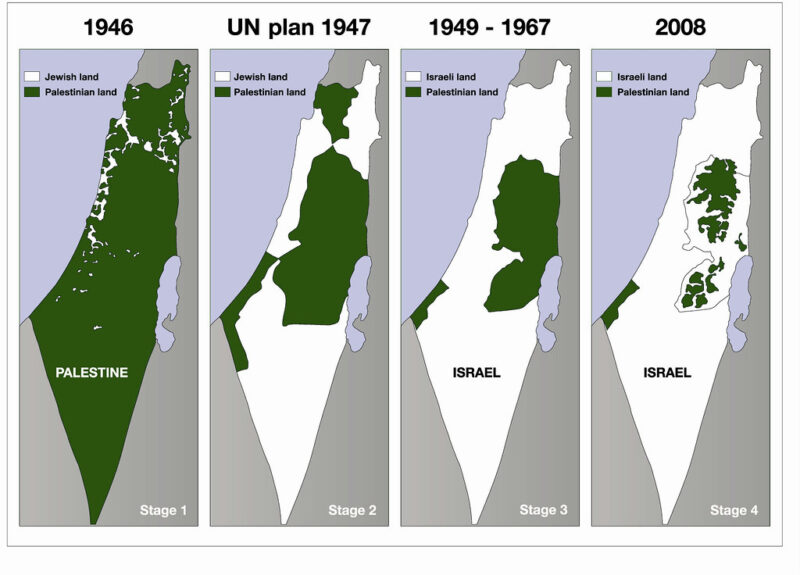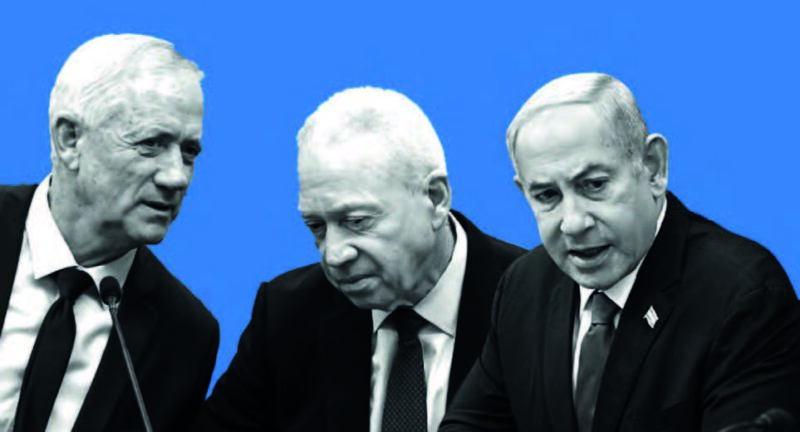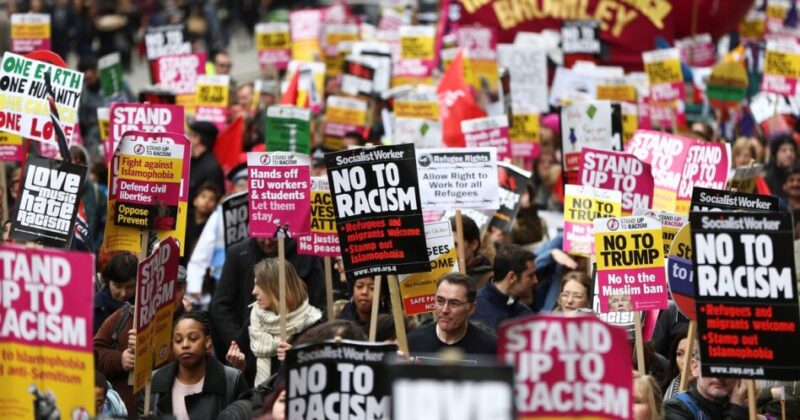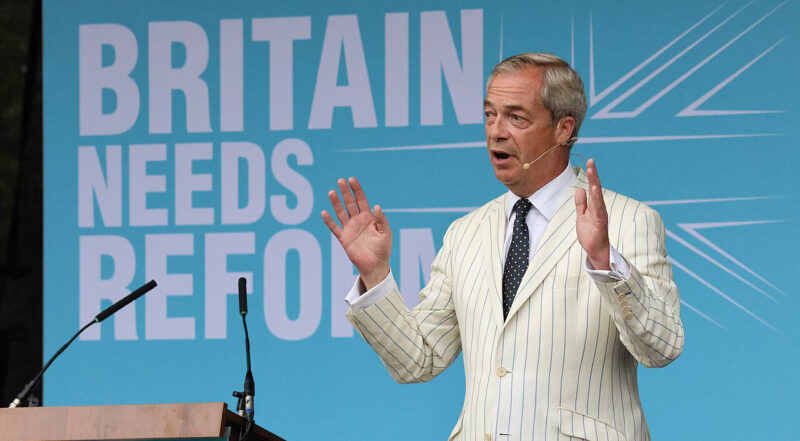The political crisis in Thailand: pseudo-Democrats reaching for power
By Tobias Hansen, Sunday December 15 2013
On December 9, Thailand’s Prime Minister dissolved parliament and gave notice of new elections. In recent weeks there have been renewed confrontations which are described in the media as a conflict between “Red Shirts” and “Yellow Shirts”.

Anti-government protests have triggered fresh elections in Thailand
Unlike the “Arab Spring”, this is not a mobilisation of the masses against a dictatorial, pro-imperialist regime but of the urban elites and “middle classes” against a populist government. In the last two weeks, the “Yellow Shirts”, the supporters of the opposition “Democratic Party”, have repeatedly organised mass demonstrations in the capital, Bangkok, demanding the end of the government of Yingluck Shinawatra. The response of the government of the PTP, the Party for Thais, which is the successor party to the TRT that was dissolved in 2007, has varied.
At first, the police were sent in with tear gas and special units, later the government withdrew the police and let the Opposition “occupy” the seat of government and other buildings, declaring itself prepared to negotiate and ultimately proposing new elections.
The trigger for protests
In 2013, there have been several protest movements against the government. From a socialist point of view, it was certainly the protests of the rubber farmers in September and October that were the most important. The farmers organised a march to Bangkok and protested against the massive drop in prices for rubber and the diminishing support they receive from the government. This movement occupied the main roads and railways and in the province of Prachuap Khiri Khan it developed into street fighting with the police. In addition, before that, there were protests in southern Thailand against the Mae Wong dam. They also organised a march to Bangkok.
Alongside these protests, however, there was also a protest camp of the right Opposition in Bangkok that was organised by the “People’s Democratic Force to Overthrow Thaksinism” and the “Dharma Army” (the political arm of the Buddhist Santi Asoke sect) and this was the starting point for the “Yellow” opposition. By “Thaksinism” is meant the current government, Yingluck Shinawatra is the sister of Thaksin Shinawatra whose TRT party government was overthrown by the military in 2007.
For the Opposition, it was not the current social conflicts that were the decisive point but rather an amnesty law which was adopted at the beginning of October. This proclaimed a general amnesty for all those who took part in the earlier conflicts between the “Reds” and “Yellows” including both the ex-premier, Thaksin Shinawatra, now living in exile, and many supporters of the “Democrats” in the Army who used brutal force against the “Red Shirts”. Nonetheless, the Opposition took the law as the focal point of its mobilisation.
In contrast to many other protest movements in semicolonial countries, this opposition does not want new elections. What they want is an unelected “People’s Council” to be appointed in place of the government. In Thailand’s two chamber system, despite reforms that provided for half the seats to be elected, half of the Senate is still appointed by an electoral committee. This is where the “Democratic Party” has its supporters, because in the parliamentary elections they stood no chance against Shinawatra’s party. That is also why the “Democratic Party” has always demanded the limitation of the electoral rights of the “uneducated” lower classes and strata.
The notice of new elections came as no surprise in Thailand. Scarcely anyone thinks that there could be an electoral victory for the Opposition. Their preference would be for the whole government to be selected by “Experts”. At the time of the change in the electoral system for the Senate, the Democratic Party argued against it because it would mean that the “uneducated and unqualified” would be able to play a role in deciding the composition of the Senate.
The supporters of the Right Opposition
The Democratic Party draws its support from sections of the state bureaucracy, the petty bourgeois-nationalist/Buddhist movements, the monarchy and those sections of the bourgeoisie who are in competition with the Shinawatra clan. That is why they want the “People’s Council” to be composed of representatives of these groups and to include figures from the Army and the Royal family who gave support to the “Yellow shirts” in the putsch against Shinawatra in 2007.
Now, the Opposition is dependent on the decisions of the Army and the King. However, that is also true for the current government. At the time of the uprising of the “Redshirts” in 2011, the Army was responsible for 90 deaths and supported the yellow “Transitional Government”. The military have huge influence within the economy; the generals own a great deal of state industry and are also major landowners opposed to the peasantry. King Bhumibol does what the military says, meaning that today the outcome of present developments is extremely difficult to predict. Both sides have many common agreements, secret contracts etc with each other, ultimately it will be the military that decide, as long as the masses do not actively intervene.
The Left in Thailand and the government.
The active and organised sections of the Left in Thailand are represented in the UDD (United front for Democracy against Dictatorship) and with this movement they support the government of Shinawatra. The first government of Thaksin Shinawatra and the TRT party had widespread support among the peasants and the poorer rural population in the north of Thailand. This was the first government to provide social help for the poor, for example, free medical care. Equally, large-scale investment in the infrastructure in the North was undertaken and there was an industrialisation of previously undeveloped regions.
Since its election in 2012, the current government has also paid guaranteed minimum prices to domestic farmers that are above market prices and have promised welfare for the lower and middle income families. Tax relief on housebuilding, subsidies for car purchase or for the purchase of tablet PCs for first-year pupils are other social welfare measures from the Shinawatra clan.
Their economic policy swings between Keynesianism and neoliberal measures; on the one side, there is a strengthening of the domestic market and of small-scale business enterprises and, on the other, the privatisation of state corporations. The Shinawatra clan itself made its billions mainly in telecommunications through the giant Shin Corporation.
The PTP, therefore, is a party which integrates the broad masses but under the leadership of a section of the capitalist class. It is therefore no surprise that, despite the bitter enmity of the traditional elites and the “Democratic Party”, this party has never questioned the institutions of the Thai state, that is, the bureaucracy, the Army and the Crown.
It was the privatisation of state corporations that gave rise to the conflict between the Shinawatra clan and the “Yellow” sections of the bourgeoisie. The main issue was the economic benefits of the military and the technocracy which were endangered by the government of the “Red shirts”.
The central issue in the current conflict is whether the two currents within the bourgeoisie can once again come to a short-term deal and what role the military and the monarchy will play in securing, or redistributing, the rights of the two sections of the bourgeoisie.
In recent decades, Thailand has become a “developing country”. Industry accounts for some 25% of the workforce but produces 45% of economic output. With 1.8 million cars per year, most of them assembled for Japanese companies, Thailand is one of the world’s 10 biggest car producers. Steel, electronics and textiles are other growing economic sectors.
For the workers and peasants of Thailand, the priority has to be preventing the “Yellow Shirts” making a putsch. As the “Democrats” began their actions, there were also hundreds of thousands of “Red Shirts” of the UDD in Bangkok but the Prime Minister sent them home, preferring to see the conflict with the “Yellows” settled through negotiations with the King rather than relying on her own mass support.
That is no surprise, such a struggle would all too easily raise the question of the position of the monarchy, the military and the institutions of the capitalists and the major landowners and, with that, the inner class contradictions in the camp of the government’s supporters.
The progressive, left, forces in the UDD, must break politically from the Shinawatra clan. The struggle against the Democratic Party and the “Yellow” section of the bourgeoisie is only the beginning. It will be necessary to develop an independent class position so that the great mass of the workers and peasants are no longer dependent on bourgeois “benefactors” like the Shinawatras and only have a role as their foot soldiers.
Today, the priority is to fight any “democratic” putsch by the “Yellows” or any form of “transitional government” backed by the King or the military. Precisely because the “Yellows” have little chance of winning elections, it is entirely possible that they will boycott the elections and instead try to force through an intervention by the military and the King in the coming months.
This time must be used to organise the left around a programme of class independence and the formation of a workers’ party which can combine the defence of democratic rights with the struggle for a socialist revolution. The central points of such a programme would include:
- No to all limitations on democratic rights! Abolition of the monarchy, convening of a Constituent Assembly controlled by committees of workers and peasants!
- Disarm the reaction, form self defence committees of workers and peasants, organise soldiers’ councils!
- The building of independent and democratic trade unions on the basis of class struggle! Today, only 2% of workers in private industry are organised but over 50% of civil servants are organised in a trade union that supports the “Yellows”.
- Expropriation of all the major landlords! Distribution of the land amongst those who work it and support for the building of agricultural cooperatives; for workers’ control of all large-scale agricultural production!
- Unification of the big companies and banks and the development of an economic plan under workers’ control!
- For a workers’ and peasants’ government based on the councils and the militia of the workers and peasants!






